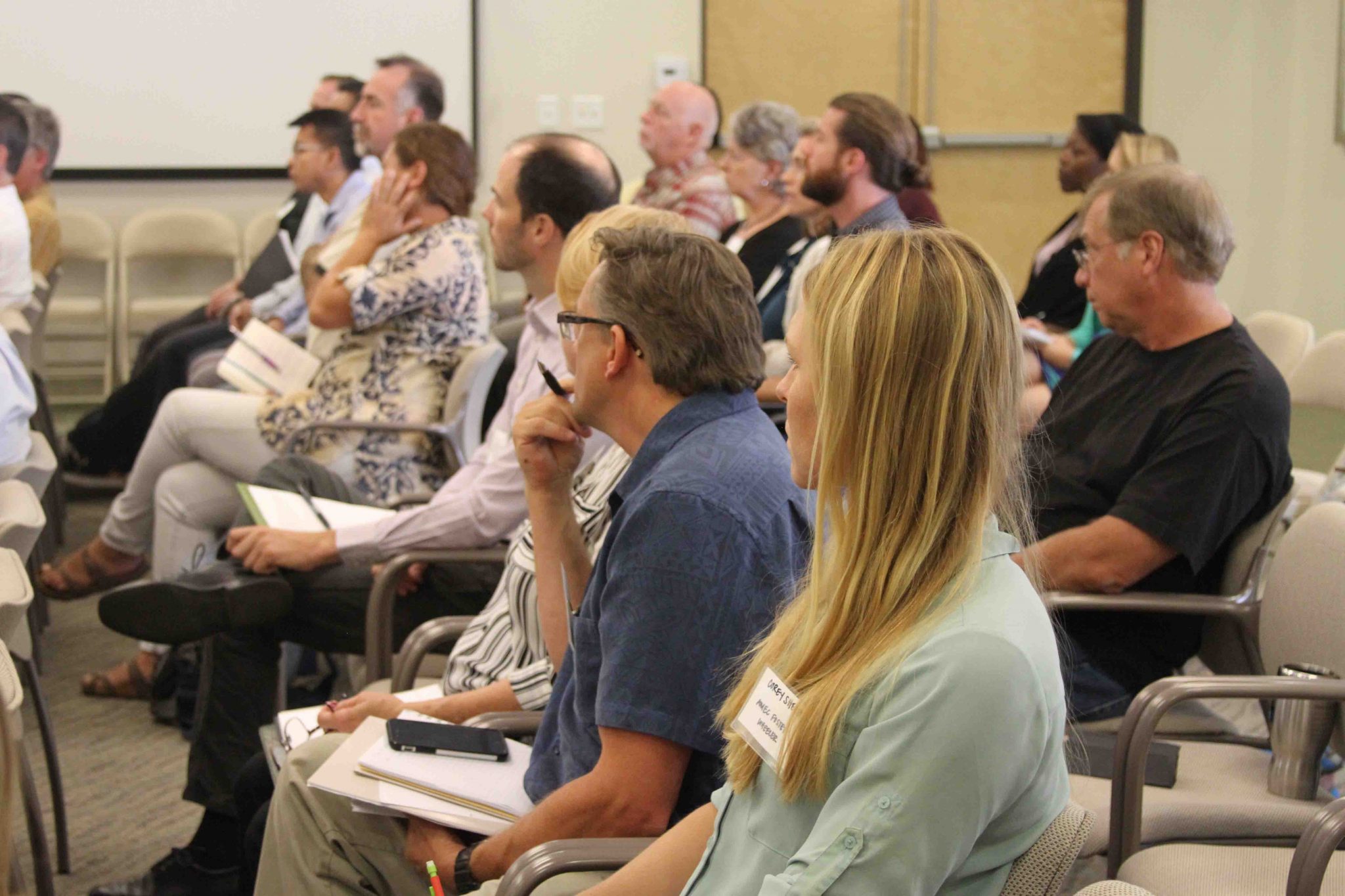Bight ’18 kickoff brings together dozens of agencies

A collaboration involving dozens of environmental organizations will examine how human activities have affected the ecological health of Southern California’s coastal waters during the sixth cycle of the Southern California Bight Regional Monitoring Program, which officially kicked off in September at SCCWRP.
Participants of the 2018 cycle of the regional marine monitoring initiative are considering featuring up to six distinct study elements – sediment quality, ocean acidification, harmful algal blooms, trash, microbial water quality and marine protected areas – that together will help paint a picture of regional ecosystem condition.
Bight ’18 participants are planning to repeat some of their previous regional monitoring efforts to document trends, particularly to sediment quality in the Southern California Bight. They also will ask new scientific questions that require novel measurements, testing of prototype technologies, and additional assessments that extend the program into previously unmonitored habitats. The program’s focus area encompasses more than 1,500 square miles of Southern California’s coastal waters.
More than 140 people representing nearly 80 organizations attended an all-day Bight ’18 kickoff meeting on September 14 at SCCWRP to begin fleshing out the management questions that the regional program will address. Potential questions were ranked and prioritized based on how environmental managers will respond once they obtain answers to these questions. At the meeting, more than 20 questions made the short list for consideration.
In the coming months, Bight ’18 participants will further refine the list of management questions and develop technical study designs that will ensure the program can get scientifically rigorous answers. Field sampling will begin July 1, 2018.
The Southern California Bight Regional Monitoring Program, which has been facilitated by SCCWRP since its inception in 1994, mobilizes Southern California environmental management agencies to collect data from across a much greater expanse than just their local discharge zones. Both regulated and regulatory agencies, as well as non-governmental and academic organizations, come together to collaboratively design the study and interpret findings.
Southern California’s environmental management community relies on the Bight program to better direct resources and to maintain focus on the areas and issues that are disproportionately impacted by human activities.
Planning and final assessment reports from the previous cycle of the Bight monitoring program, Bight ’13, are available online. For more information and to learn about becoming a Bight ’18 program participant, contact Ken Schiff.
More news related to: Southern California Bight Regional Monitoring Program, Top News